Advertisements
Advertisements
प्रश्न
In ∆ABC, ∠Α = 100°, AD bisects ∠A and AD ⊥ BC. Then, ∠B is equal to ______.
विकल्प
80°
20°
40°
30°
उत्तर
In ∆ABC, ∠Α = 100°, AD bisects ∠A and AD ⊥ BC. Then, ∠B is equal to 40°.
Explanation:
Given, ∠BAD = ∠DAC = 50° ......[∵ AD bisects ∠A and ∠A = 100°]
And ∠BDA = ∠ADC = 90° ......[∵ AD ⊥ BC]
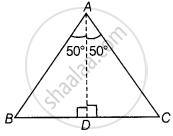
Now, In ∆ABC,
∠ABD + ∠BAD + ∠BDA = 180° ......[Angle sum property of a triangle]
⇒ ∠ABD + 50° + 90° = 180°
⇒ ∠ABD + 140° = 180°
⇒ ∠ABD = 180° – 140°
⇒ ∠ABD = 40°
APPEARS IN
संबंधित प्रश्न
In the given figure, the side QR of ΔPQR is produced to a point S. If the bisectors of ∠PQR and ∠PRS meet at point T, then prove that ∠QTR = 1/2∠QPR.
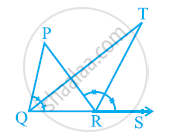
Find the value of the unknown x and y in the following diagram:
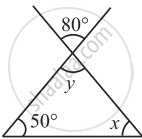
Find the value of the unknowns x and y in the following diagram:
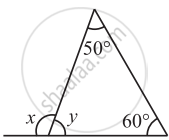
In the following triangle, find the value of x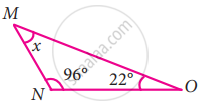
If the three angles of a triangle are in the ratio 3 : 5 : 4, then find them
By which of the following criterion two triangles cannot be proved congruent?
If one angle of a triangle is equal to the sum of other two, then the measure of that angle is ______.
In triangle XYZ, the measure of angle X is 30° greater than the measure of angle Y and angle Z is a right angle. Find the measure of ∠Y.
The angles of a triangle are in the ratio 2:3:5. Find the angles.
The angles of a triangle are arranged in descending order of their magnitudes. If the difference between two consecutive angles is 10°, find the three angles.
